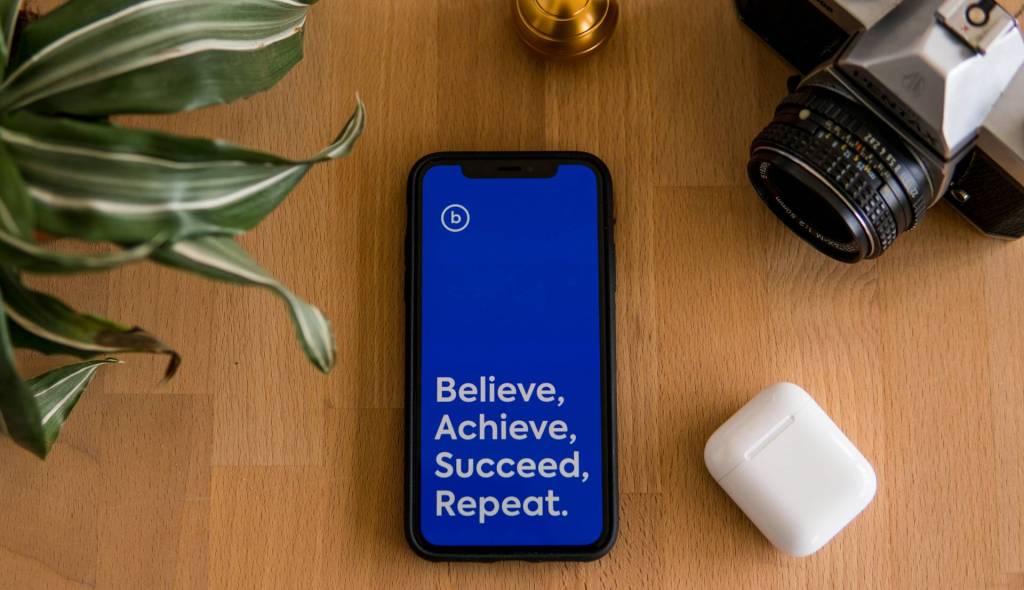In today’s digital age, personal branding has become more important than ever. Whether you’re a business professional, entrepreneur, or freelancer, cultivating a strong personal brand can open doors to exciting opportunities and help you stand out in a crowded marketplace. But how do you go about building a personal brand that truly reflects your unique identity and resonates with your target audience? In this comprehensive guide, we’ll explore a series of powerful personal branding exercises that will empower you to unlock your true potential and build a strong and authentic personal brand.
Why Personal Branding Matters
Personal branding is the process of establishing and promoting yourself as a brand. It involves defining your unique value proposition, showcasing your expertise, and cultivating a strong online presence. In today’s hyper-connected world, personal branding is essential for professional success. Here’s why:
- Differentiation: In a competitive job market, a strong personal brand helps you stand out from the crowd. It allows you to showcase your unique skills, experiences, and perspectives, setting you apart from other candidates.
- Credibility: A well-crafted personal brand establishes you as an authority in your field. It builds trust and credibility with your audience, making it easier to attract clients, customers, or employers.
- Opportunities: A strong personal brand opens doors to exciting opportunities. It can lead to speaking engagements, collaborations, media features, and partnerships that can elevate your career or business to new heights.
- Networking: Personal branding helps you build a strong network of like-minded individuals. By sharing your expertise and engaging with others in your industry, you can forge valuable relationships and tap into a supportive community.
Now that we understand the importance of personal branding, let’s dive into a series of exercises that will guide you in developing a powerful and authentic personal brand.
Exercise 1: Define Your Unique Value Proposition
Your unique value proposition (UVP) is the foundation of your personal brand. It’s what sets you apart from others in your field and makes you valuable to your target audience. To define your UVP, follow these steps:
- Identify Your Strengths: Take inventory of your skills, experiences, and areas of expertise. What are you known for? What do you excel at? Identify the unique strengths that make you stand out.
- Understand Your Target Audience: Who is your ideal audience? What are their pain points and desires? Understanding your audience will help you tailor your personal brand to meet their needs.
- Craft Your UVP Statement: Summarize your unique value proposition in a concise and compelling statement. It should clearly communicate what you offer, who you serve, and what sets you apart.
Exercise 2: Define Your Brand Personality
Your brand personality is the emotional and human characteristics that define your personal brand. It shapes how you communicate, engage with your audience, and differentiate yourself from others. To define your brand personality, consider the following:
- Identify Your Core Values: What principles and values guide your actions and decisions? Your core values should align with your personal and professional beliefs, and they should be evident in your brand messaging.
- Choose Your Tone of Voice: How do you want to communicate with your audience? Do you want to be authoritative, friendly, or conversational? Choose a tone of voice that aligns with your brand personality and resonates with your target audience.
- Create Your Brand Style Guide: Develop guidelines for your brand’s visual identity, including colors, fonts, and imagery. Consistency in visual branding helps create a recognizable and cohesive brand.
Exercise 3: Craft Your Personal Brand Story
Your personal brand story is a powerful tool for connecting with your audience on an emotional level. It helps you build trust, establish authenticity, and differentiate yourself from others. To craft your personal brand story, follow these steps:
- Identify Your Journey: Reflect on your personal and professional journey. What challenges have you overcome? What pivotal moments have shaped who you are today? Identify the key elements of your story.
- Find the Emotional Hook: What emotions do you want your audience to feel when they hear your story? Tap into the universal human experiences that resonate with your audience and create an emotional connection.
- Craft Your Narrative: Weave your key elements and emotions into a compelling narrative. Start with a hook that grabs attention, outline the challenges you faced, and highlight the lessons learned and successes achieved.
Exercise 4: Audit Your Online Presence
In today’s digital world, your online presence is often the first impression people have of you. It’s crucial to ensure that your online presence aligns with your personal brand and showcases your expertise. Conduct an audit of your online presence using the following steps:
- Google Yourself: Search your name on Google and assess the search results. Are there any negative or irrelevant results? Take steps to remove or mitigate any damaging content.
- Review Your Social Media Profiles: Go through your social media profiles and ensure they reflect your personal brand. Update your bio, profile picture, and cover photo to create a cohesive and professional image.
- Create a Content Strategy: Develop a content strategy that aligns with your personal brand and target audience. Consistently share valuable and relevant content that showcases your expertise and engages your audience.
Exercise 5: Network and Collaborate
Networking is a crucial aspect of personal branding. By connecting with like-minded individuals in your industry, you can expand your reach, learn from others, and uncover new opportunities. Here’s how to network effectively:
- Attend Industry Events: Attend conferences, seminars, and industry events to meet and connect with professionals in your field. Take the initiative to introduce yourself, ask questions, and exchange contact information.
- Leverage Online Platforms: Join professional networking platforms like LinkedIn and actively engage with others in your industry. Share insights, comment on posts, and participate in relevant groups and discussions.
- Collaborate with Others: Seek out collaboration opportunities with individuals or organizations that align with your personal brand. Collaborative projects can expand your network, increase your visibility, and enhance your credibility.
Exercise 6: Develop Thought Leadership
Establishing yourself as a thought leader in your industry is a powerful way to build your personal brand. Thought leaders are respected authorities who provide valuable insights and drive meaningful conversations. Here’s how to develop thought leadership:
- Identify Your Niche: Define the specific area within your industry where you want to establish yourself as a thought leader. Focus on a niche that aligns with your expertise and provides value to your audience.
- Create Quality Content: Share your expertise and insights through high-quality content. Write blog posts, create videos, or host webinars that offer valuable information and solutions to your audience’s pain points.
- Guest Post and Speak at Events: Seek opportunities to guest post on reputable industry websites or speak at conferences and events. Sharing your expertise with a wider audience will elevate your visibility and establish your authority.
Exercise 7: Seek Feedback and Iterate
Building a personal brand is an ongoing process of refinement and improvement. Seek feedback from your audience, mentors, and peers to gain valuable insights and identify areas for growth. Here’s how to seek feedback effectively:
- Ask for Specific Feedback: Be clear about what you want feedback on. Whether it’s your content, online presence, or overall brand messaging, provide specific questions to guide the feedback process.
- Act on Feedback: Use the feedback you receive to make informed decisions and iterate on your personal brand. Implement changes and improvements based on the insights you’ve gained.
- Measure Your Progress: Establish key performance indicators (KPIs) to track the success of your personal branding efforts. Monitor metrics such as website traffic, social media engagement, and client or job opportunities.
The Impact of Personal Branding on Career Development
In the contemporary professional landscape, establishing a strong personal brand has become more than just a tactic—it’s a necessity. The impact of personal branding on career development cannot be overstated; it’s a powerful tool that can open doors to new opportunities, elevate your professional status, and set you apart in a crowded marketplace.
Accelerating Career Growth
A well-crafted personal brand acts as a beacon, attracting potential employers, clients, and collaborators who align with your values and professional goals. It tells the story of who you are, what you stand for, and the unique value you bring to the table. By consistently presenting your skills and expertise, you position yourself as a thought leader and a go-to expert in your field. This recognition often leads to career acceleration, as you are more likely to be considered for promotions, invited to speak at industry events, and sought after for your expertise.
Enhancing Visibility and Recognition
Personal branding elevates your visibility and recognition in your industry. By sharing your knowledge, insights, and experiences through various channels, such as social media, blogging, or speaking engagements, you increase your professional footprint. This heightened visibility makes you more memorable and top-of-mind for those in your network when opportunities arise. Essentially, your personal brand becomes a magnet, drawing opportunities your way.
Building Trust and Credibility
Trust and credibility are the cornerstones of any successful career, and personal branding plays a crucial role in establishing both. A strong personal brand demonstrates your commitment to your profession and showcases your achievements and capabilities. When your personal brand aligns with your professional actions and ethics, you build trust with your audience and peers. This trust is fundamental in fostering professional relationships, securing client confidence, and advancing in your career.
Opening Doors to New Opportunities
A robust personal brand opens the door to a myriad of opportunities beyond traditional job applications. These can include freelance gigs, consulting roles, partnerships, and even unexpected career shifts. Personal branding allows you to showcase a comprehensive picture of your capabilities and interests, which can attract diverse opportunities that align with your career aspirations and personal goals.
Networking and Community Building
At its core, personal branding is about storytelling and connection. By sharing your journey and expertise, you not only build your brand but also contribute to a community of like-minded professionals. This community becomes a valuable network of contacts, mentors, and peers who can provide support, guidance, and new opportunities. Effective personal branding transforms networking from a chore into a natural byproduct of your everyday professional life.
In conclusion, the impact of personal branding on career development is profound and multifaceted. It’s about creating a narrative that highlights your strengths, aligns with your career goals, and resonates with your target audience. By investing time and effort into building a strong personal brand, you pave the way for enhanced career opportunities, greater industry recognition, and a more fulfilling professional journey. As we delve further into the nuances of personal branding, remember that it is an ongoing process—a journey that evolves with your career and shapes your professional legacy.
The Impact of Personal Branding on Career Development
In today’s competitive landscape, establishing a robust personal brand can significantly impact your career development. A well-crafted personal brand does more than just set you apart from the competition; it can open doors to new opportunities and pave the way for professional growth and success.
Elevating Professional Visibility
A strong personal brand increases your visibility in your industry. By consistently showcasing your skills, knowledge, and experiences online, you become more recognizable to potential employers, clients, and collaborators. This increased visibility can lead to job opportunities, partnerships, and invitations to speak at industry events, further establishing you as a thought leader in your field.
Building Credibility and Trust
Personal branding goes hand in hand with credibility. When you clearly communicate your values, expertise, and professional achievements, you build trust with your audience. This trust is fundamental in the professional world, where credibility can be the deciding factor in securing a job, closing a deal, or leading a team.
Networking and Relationship Building
A well-defined personal brand can significantly enhance your networking efforts. By presenting a clear and consistent image of who you are and what you stand for, you attract like-minded professionals and potential mentors. These connections can provide valuable advice, introduce you to new opportunities, and support your career advancement.
Accelerating Career Growth
Personal branding can be a catalyst for career advancement. Employees with strong personal brands are often seen as more valuable by their employers, making them prime candidates for promotions and leadership roles. Furthermore, entrepreneurs and freelancers with compelling personal brands may find it easier to attract clients and command higher rates for their services.
Navigating Career Transitions
Whether you’re looking to shift industries or pivot to a new role, a solid personal brand can smooth the transition. By establishing your brand around your transferable skills and core values, you can demonstrate your relevance and adaptability to potential employers or clients in a new field.
Real-life Examples
Consider the stories of professionals who have successfully leveraged their personal brands to advance their careers. From the marketing expert who became a sought-after consultant, to the software developer who landed a dream job at a tech giant, these examples underscore the transformative power of personal branding.
In conclusion, personal branding is not just a tool for self-promotion; it’s a strategic asset in career development. By investing in your personal brand, you not only differentiate yourself in the job market but also set the stage for ongoing professional growth and opportunities.
Conclusion
Building a personal brand is a transformative journey that requires self-reflection, strategic planning, and consistent action. By following these personal branding exercises, you can unlock your unique identity, maximize your potential, and build a strong and authentic personal brand. Remember, personal branding is not a one-time activity but an ongoing commitment to nurturing and evolving your brand over time. Embrace the process, stay true to yourself, and watch as your personal brand becomes a powerful asset in your professional journey.
FAQ: Mastering Personal Branding
What are the 5 C’s of Personal Branding?
The 5 C’s of personal branding represent key elements to develop and maintain a strong personal brand:
- Clarity: Being clear about who you are, what you stand for, and your professional goals.
- Consistency: Regularly expressing your values and message across all platforms and interactions.
- Charisma: Engaging and connecting with your audience in a unique and authentic way.
- Contribution: Offering value and sharing your knowledge and expertise with others.
- Confidence: Believing in your abilities and showcasing your strengths and accomplishments.
What are the 4 C’s of Personal Branding?
The 4 C’s focus on slightly different aspects of personal branding:
- Clarity: Understanding and articulating your unique value proposition.
- Consistency: Maintaining uniformity in your message and image across various channels.
- Credibility: Building trust and authority in your field or industry.
- Charisma: Creating a likable and engaging personal image.
What are the 4 P’s of Personal Branding?
The 4 P’s are another framework used to describe personal branding elements:
- Professionalism: Demonstrating expertise and ethical behavior in your field.
- Personality: Infusing your unique traits and characteristics into your professional image.
- Publicity: Gaining exposure and visibility through various media and networking.
- Pitch: Effectively communicating your value proposition to your target audience.
What are the 5 E’s of Personal Branding?
The 5 E’s offer a comprehensive approach to personal branding:
- Expertise: Establishing yourself as an authority in your niche.
- Experience: Sharing your journey, successes, and failures to connect and resonate with others.
- Exclusivity: Differentiating yourself from competitors by highlighting unique traits or offerings.
- Engagement: Interacting with your audience and building relationships.
- Exposure: Increasing your visibility and reach through various channels and platforms.
What are the Six Pillars of Personal Branding?
The six pillars provide a structured approach to building a personal brand:
- Authenticity: Being genuine and true to yourself.
- Differentiation: Standing out from the competition.
- Visibility: Being seen and recognized in your field.
- Consistency: Keeping your message and image coherent across all touchpoints.
- Value: Providing tangible benefits to your audience or clients.
- Connectivity: Building and nurturing professional relationships.
What is the Formula for Personal Branding?
While there’s no one-size-fits-all formula, a common approach includes:
- Identifying your unique value proposition (UVP).
- Defining your target audience.
- Creating and distributing content that showcases your UVP to your audience.
- Engaging with your community and building relationships.
What is the Golden Rule of Personal Branding?
The golden rule is: Be authentic. Authenticity is the cornerstone of personal branding, ensuring that your brand is a true reflection of who you are and what you stand for.
What is a Personal Brand Sweet Spot?
The personal brand sweet spot is the intersection where your passions, skills, and market demand overlap. Finding this spot means you are working in a niche you love, you’re good at, and for which there is a need.
How Do I Make Myself a Personal Brand?
Creating a personal brand involves several steps:
- Discover your unique attributes and what you stand for.
- Determine your target audience and what they value.
- Build a consistent presence online and offline that reflects your personal brand.
- Engage with your audience, provide value, and build relationships.
- Regularly evaluate and refine your brand as you grow and evolve.
Featured Image Credit: Photo by Brooke Lark; Unsplash – Thank you!
















